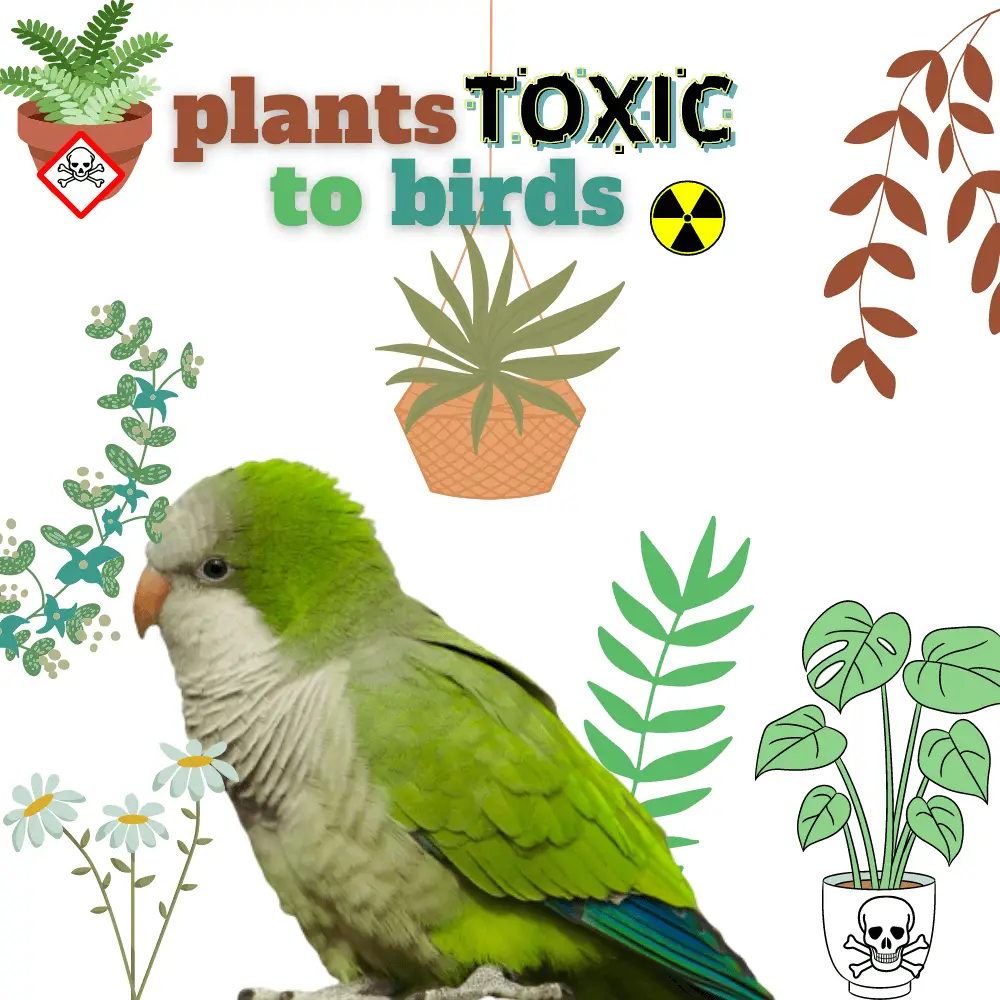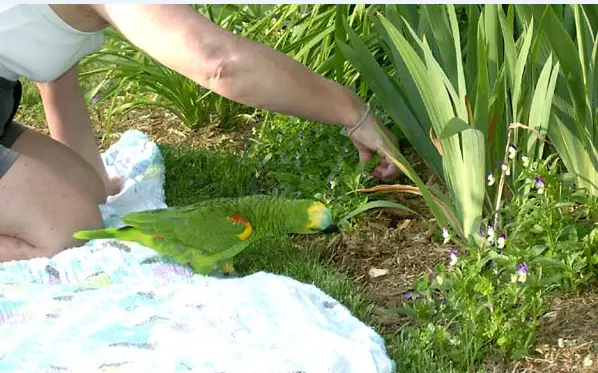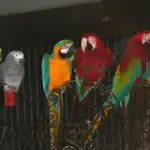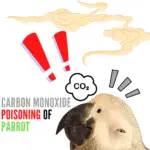
Toxic plants for birds: In this list, sometimes the whole plant is toxic to parrots, or only parts of it are poisonous and can cause severe to severe poisoning if ingested.
The list also includes plants that can cause contact dermatitis, or contain calcium salts ( oxylates ) which irritate the mucous membranes. Either way, none of these plants should be left at the disposal of his parrot.
Plants toxic to birds
| French name | Latin name |
| apricot tree | Prunus armeniac |
| aconite / jupiter helmet | Aconitum |
| black cohosh / herb of St-Cristophe | Actea |
| aglaonema | Aglaonema |
| aloes nobilis | Aloe nobilis or mitriformis |
| amaranth | Amaranthus |
| amaryllis | Hippeastrum |
| anemone | Anemone |
| * red peas / Indian licorice | Abrus precatorius |
| arisaema | Arisaema |
| asclepias | Asclepia |
| indoor asparagus | Asparagus densiflorus sprengeri |
| liquorice astragalus | Oxitropis or astragalus |
| eggplant | Solanium melongena |
| avocado tree | Persea americana |
| azalea | Rhododendron canescens |
| sacred or celestial bamboo | Nandina domestica |
| belladonna | Atropa belladona |
| beauty of the night | Mirabilis jalapa |
| bonsai | Pinus pentaphylla and others |
| boxwood | Buxux |
| theobroma cocoa tree | Theobroma cocoa |
| cactus candle | Cereus peruvianus |
| caladium / elephant ears | Caladium oucolocasia |
| calla | Zantedeschia aethiopica |
| carissa | Acokanthera |
| climbing celast | Celastrus scandens |
| celastrus | Celastrus |
| Cherry tree | Prunus sp |
| jerusalem cherry tree | Solanium pseudocapsicum |
| hemp | Cannabis sativa |
| Oak | Quercus |
| hemlock / spotted hemlock | Conium maculatum or cicuta |
| cicutary | Erodium cicutarium |
| aquatic hemlock | Cicuta virosa |
| clematis | Clematis |
| bleeding heart, bride’s heart | Dicentra formosa |
| colchicum / fall crocus | Colchicum |
| colocasia | Colocasia |
| coniferous | Taxus |
| sunset | Lokwia famatimensis |
| crocus | Crocus |
| crotataria | Crotataria or ludwigia alternifolia |
| cycads | Cycas revoluta |
| Persian cyclamen | Cyclamen persicum giganteum |
| daphne | Daphne |
| daphne, pretty wood or nice wood | Daphne mezereum |
| datura or jimsonweed | Datura spp |
| diffenbachia | Diffenbachia |
| digital | Digitalis |
| Duranta | Thunbergia grandifllora |
| thorn of christ | Euphorbia milii splendens |
| blackthorn | Rhamnus cathartia |
| epripemnum | Epripemnum aureum |
| eucalyptus | Eucalypsus globulus |
| Euphorbia | Euphorbia millii and tirucalli |
| eagle fern | Pteridium aquilinum |
| feathery fern | Asperragus setaceus plumosus |
| charcoal | Euonymus |
| gelsemium | Gelsemium |
| gelsemium | Gelsemium sempervirens |
| juniper | Juniperus |
| geranium | Pelargonium and california |
| gladiolus | Gladiolus |
| glory of marengo | Hedera canariensis |
| morning glory | Argyreia, calystegia, convolvulus etc. |
| wisteria | Wisteria |
| mistletoe | Phoradendron flavescens |
| heliotrope | Heliotropium |
| holly | Ilex |
| hydrangea or hyortensia | Hydrangea |
| yew | Podocarpus macrophyllus |
| indigo | Indegofera |
| iris | Iris |
| hyacinth | Hyacinthus |
| jasmine | Jasminum nudiflorum |
| black henbane | Hyoscyamus niger |
| lantana | Lantana |
| lantana or camara | Lantana |
| chinese lantern | Physalis |
| laurel | Kalmia latifolia |
| cherry laurel | Laurocerasus officinalis |
| cherry laurel | Prunus laurocerasus |
| mountain laurel | Kalmia |
| noble laurel | Laurus nobilis |
| oleander | Nerium oleander |
| ivy (all) | Hedera |
| big leaf ivy | Tenecio macroglossus |
| german ivy | Senecio mikanioides |
| english ivy | Hedera helix |
| silver ivy | Scindapsus pictus |
| devil’s ivy or photos | Scindapse aureus |
| glacier ivy | Hedera helix glacier |
| ground ivy | Glechoma hederacea |
| Indian lilac | Melia azederach |
| bindweed | Ipomaea tricolour |
| lobelia | Lobelia |
| lupine | Lupinus |
| lilies (all) | Lilium |
| margosse | Momordica charantia |
| chestnut tree | Aesculus hippocastanum |
| melaleuca | Melaleuca |
| Caroline’s nightshade | Solanium carolinense |
| nightshade | Solanium nigrum |
| Lily of the valley | Convallaria majalis |
| nutmeg | Myristica fragrans |
| narcissus / daffodil | Narcissus |
| nephtytis | Syngonium podophyllum |
| nerine | Nerien bowdenii |
| vomit nut | Nux vomica |
| bearded carnation | Dianthus barbatus |
| Paradise Bird | Strelizia reginae |
| black gold | Philodendron melanochryson |
| orchid | Cypripedium |
| elephant ear | Philodendron hastatum |
| rabbit ears | Opuntia micradasy & # 8217; s alkispina |
| oxalidacea | Oxalis acetosella, depei, etc. |
| oxytropis | Oxytropis or astragalus |
| paradelle | Rumex |
| opium poppy | Papaver somniferum |
| to fish | Prunus persica |
| thought | Viola |
| snowdrops | Galanthus |
| periwinkle | Vinca |
| little preacher | Arisaema triphillum |
| peyote or mescal | Lophophora williamsii |
| philodendron (all) | Philodendron |
| incised leaf philodendron | Monstera deliciosa |
| climbing philodendron | Philodendron scandens |
| pothos or marble queen | Scindapse aureus |
| golden pothos | Epipremnum aureus |
| phytolacca | Phytolacca |
| larks foot or dolphins | Delphinium |
| peony | Paeonia |
| coral plant | Jatrophia multifida |
| umbrella plant | Yperus alternifolius |
| podophilla | Podophyllum peltatum |
| poinsettia | Euphorbia pulcherrima |
| Arrowhead | Syngonium podophillum |
| sweet pea lathyrus sp | Lathyrus sp |
| ornamental pepper tree | Capsicum annuum |
| primrose | Primula |
| plum tree | Prunus domestica |
| rat tail | Aporocactus flagelliformis |
| buttercup | Ranunculus |
| rheum / rhubarb of the monks | Rheum rhabarbarum |
| rhododendron | Rhododendron |
| garden rhubarb | Rheum X hybridum |
| castor or palma christi | Ricinus communis |
| virgin’s hoof | Cypripedium reginae |
| sansevière, mother-in-law’s tongue | Sanseviera |
| officinal sage | Salvia officinalis |
| shrubbery | Senecio jacobea |
| syringe | Philadelphus |
| sophora | Sophora secundiflora |
| jimsonweed | Datura stramonium |
| sumac (all) | Rhus vernix, radican, diversiloba, etc. |
| snowberry white ferret | Symphoricarpos albus |
| foul-smelling symplocarp or stinking cabbage | Symplocarpus foetidus |
| syngonium | syngonium podophyllum |
| tobacco | Nicotina |
| creeping clover | Trifolium repens |
| privet | Ligustrum |
| tulip | Tulipa |
| veratre | Veratrum |
| vetch | Vicia |
| Virginia creeper | Parthenocissus quinquefolia |
| violin | Philodendron pendurae form |
| vivia faba | Vivia faba |
| calla lily | Calla lily |
* or … rosary tree / cascavelle
Minimize the risks

Toxic plants for birds
- Familiarize yourself with the dangerous plants in your garden and banish poisonous plants inside the house or aviary. If you are truly a gardening freak, keep plants, seeds, bulbs, onions, and chemicals ( insecticides, pesticides, fungicides ) away from your parrot’s beak.
- Never feed berries or berries from the wild or from your garden to your parrot without being certain that they are non-toxic.
Never feed your birdseed to seed. - Always remember that heating or cooking a plant does not always destroy the toxic substance.
- Never trust the wild birds in your area to tell you about non-poisonous plants or berries.
- Never prepare household medicine for your parrot with native or cultivated plants.
List of TOXIC plants for birds
SOURCE:Paradise Aviary
Some symptoms of plant poisoning

Ingestion of poisonous plants can present itself in many forms in the parrot, ranging from diarrhea, vomiting, constipation, or other gastrointestinal problems, to disturbances of the nervous system, the immune system, or blood.
These poisonings can cause severe damage to the kidneys and liver and changes in blood chemistry. Certain toxins can cause a wide variety of dermatitis or skin reactions resulting in pain, redness, eye or nasal irritation, and even allergies which can escalate into breathing problems or severe irritation to the mucous membranes of the mouth or throat and cause death.
If you think your parrot has ingested a poisonous plant
- Identify the plant.
- Call your vet to find out what to do next and follow their advice to the letter.
- Keep your bird warm, away from any additional stress.
- Go immediately to your veterinarian and take the plant away so that the latter can properly identify it and be able to see how much the parrot has ingested.
- If your bird has vomited, take a sample of the vomit to your veterinarian.
Complete list of bird-safe plants
SOURCE:Lemon Budgie
Related Articles:




















